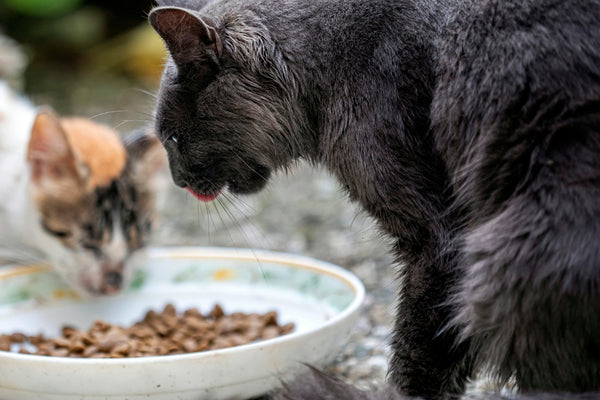As pet owners, we can all agree that our furry friends are full of personality. But sometimes, those quirks can turn into behavior problems. Whether it's a dog that barks uncontrollably or a cat that's taken a liking to shredding the furniture, these issues can be challenging to manage. Fortunately, holistic approaches to pet behavior can provide effective solutions, helping both you and your pet find peace.
For more pet care tips, check out My Pet Collective.
Understanding the Root Causes of Behavioral Issues
Before diving into solutions, it's essential to understand that behavior issues often have underlying causes. Stress, anxiety, lack of stimulation, or unmet needs can all lead to undesirable behaviors in pets. Identifying these root causes is crucial for addressing the issue effectively.
Emotional and Physical Health
Like humans, animals have both emotional and physical health needs. A pet that's scared or anxious will likely display different behaviors than one that feels secure and confident. Behavioral problems can often be traced back to a pet's emotional state, making it important to address these issues holistically.
The Importance of Diet and Nutrition
A balanced diet can significantly impact your pet's behavior. Nutrient deficiencies or food sensitivities can lead to irritability and hyperactivity. Ensuring your pet has a diet rich in nutrients can assist in moderating their behavior. Consider consulting your veterinarian about the best dietary options for your furry companion.
Holistic Approaches to Addressing Behavior Problems
Mindful Interaction
Pets crave attention and structured interaction. Developing a routine that includes play, training, and affection can reduce behavioral problems. Games that stimulate your pet's mind are particularly beneficial. For example, indestructible chew toys like these for aggressive chewers can provide mental challenges and physical satisfaction, reducing your pet's destructive tendencies.
Safe Space and Environment
Sometimes, pets act out because they feel unsafe or stressed in their environment. Ensuring your pet has a safe zone where they can retreat can help alleviate anxiety. For dogs traveling in vehicles, consider using a car barrier such as the Zone Tech Dog Car Barrier to create a secure space, reducing travel stress and associated behavioral issues.
Physical Exercise and Stimulation
Regular physical activity is key to reducing behavioral problems. Dogs and cats alike need exercise to burn off energy and stay healthy. For active dogs, outdoor adventures are invaluable but be sure they're warm and comfortable with a Cozy Winter Dog Coat during cold weather outings. For cats, keeping them entertained with a multi-level cat tree can prevent boredom-related behaviors. The Real Wood 74" Multi-Level Cat Tree is perfect as it provides variety and physical engagement.
Alternative Therapies
In recent years, alternative therapies such as aromatherapy, acupuncture, and massage have been recognized as beneficial for pets. Essential oils can have calming effects when used correctly, and animal massage can relieve stress and reduce behavioral issues stemming from anxiety.
Mental Stimulation
Cats can also benefit from vertical space and interactive play to keep their minds engaged. A Real Wood Cat Climber Play House can provide cats with the climbing and exploration they crave.
Positive Reinforcement Training
Positive reinforcement is one of the most effective ways to modify pet behavior. Reward your pet when they exhibit desired behaviors, while ignoring unwanted behaviors. This approach encourages pets to repeat positive actions.
The Role of Professional Guidance
Sometimes, professional help may be needed, especially if the behavioral problem is severe or persistent. Veterinary behaviorists and certified pet trainers can provide personalized strategies that align with your pet's unique needs.
Veterinary Check-ups
Consistent vet visits are essential for maintaining your pet's health, both physical and emotional. Regular check-ups can rule out health issues that may be contributing to behavior problems.
Breed-Specific Considerations
Every breed comes with its own set of characteristics that can influence behavior. Understanding your pet’s breed-specific needs can help you tailor your approach to behavior management.
Dogs
Larger breeds may require more physical activity, while smaller breeds may have higher energy but shorter bursts of activity needs. Providing the right type of chew toys and other enrichment activities can be beneficial.
Cats
Certain cats are more social, while others prefer solitude. It's important to respect their individual preferences and provide adequate outlets for their natural behaviors.
Conclusion
Handling pet behavior problems doesn't have to be an overwhelming task. By taking a holistic approach—considering emotional health, diet, safe environments, exercise, and alternative therapies—you can create a harmonious life for both you and your pet. Remember, patience and consistent, loving care are crucial in transforming unwanted behaviors into positive traits.
For more information on pet care products that can help address these issues, visit My Pet Collective.
By taking these holistic steps, you are not just correcting behavior problems but enhancing the life of your beloved pet.












